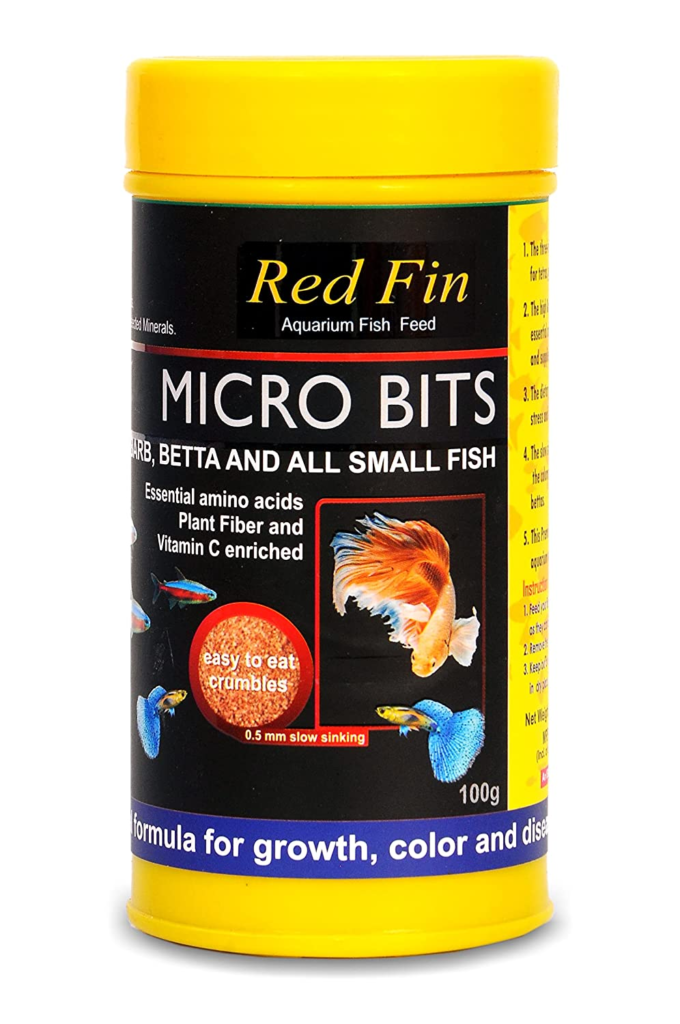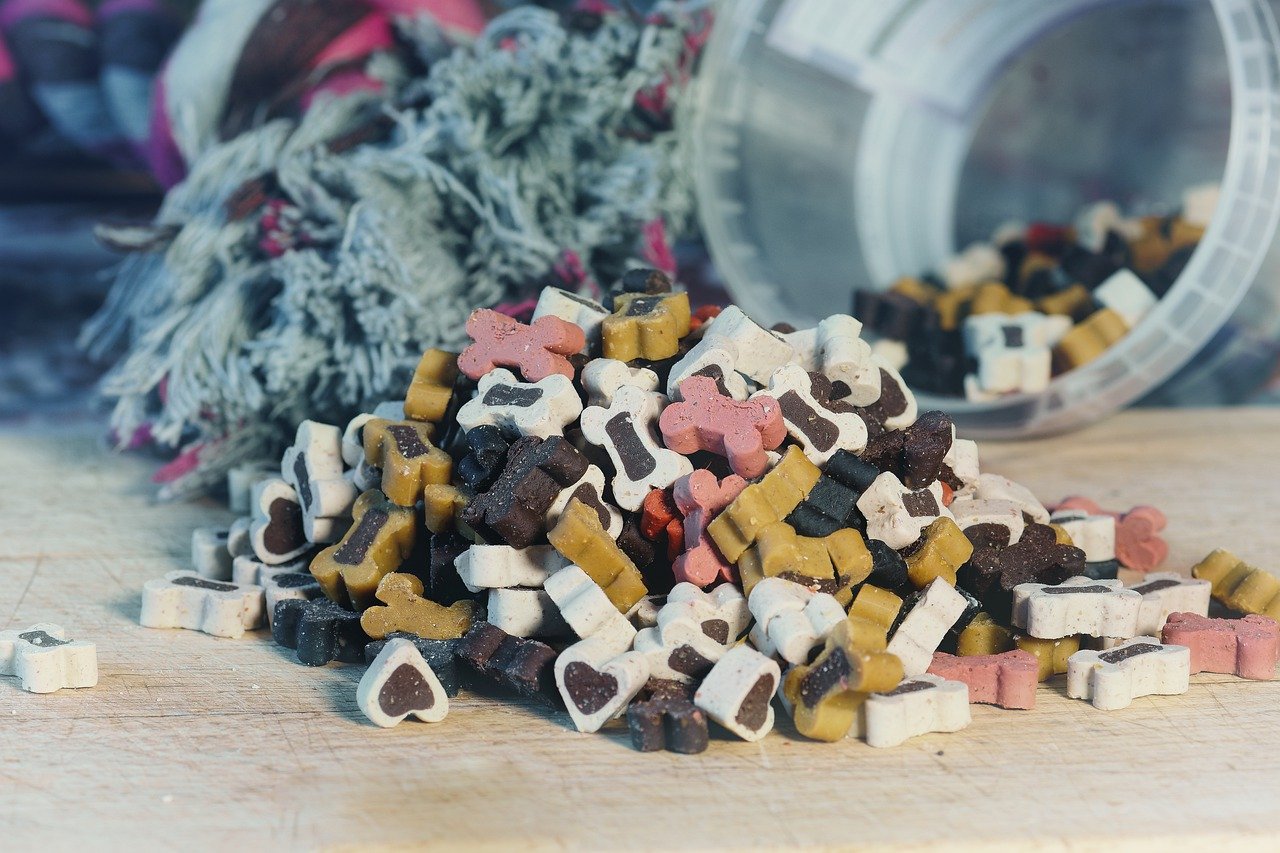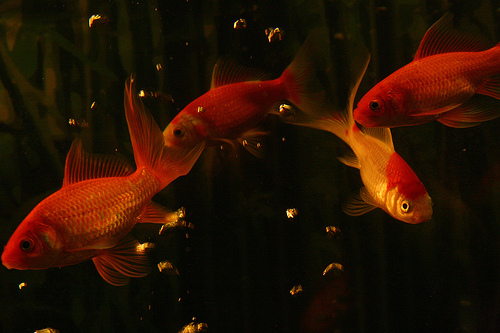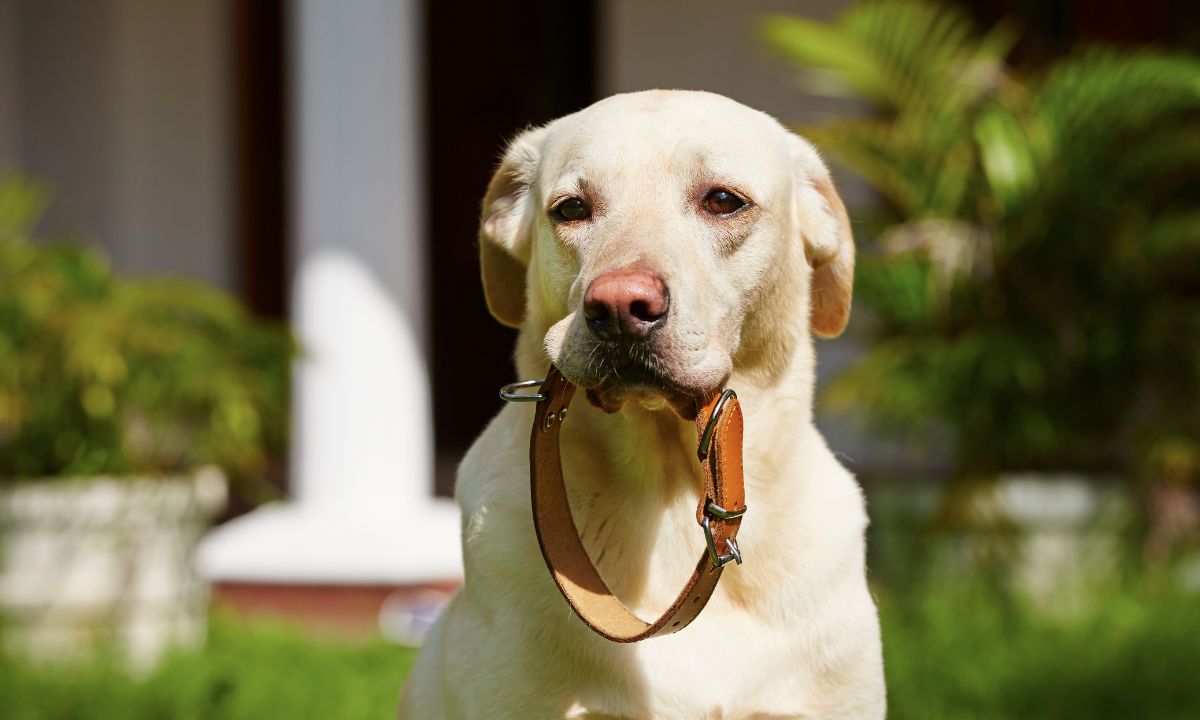One of the species of fish that can be found in home freshwater tanks the most frequently are the guppies. They are a resilient species that adjusts well to a wide variety of situations. In this post we are going to discuss all about Guppies and the best guppy fish food in India which you can get online.
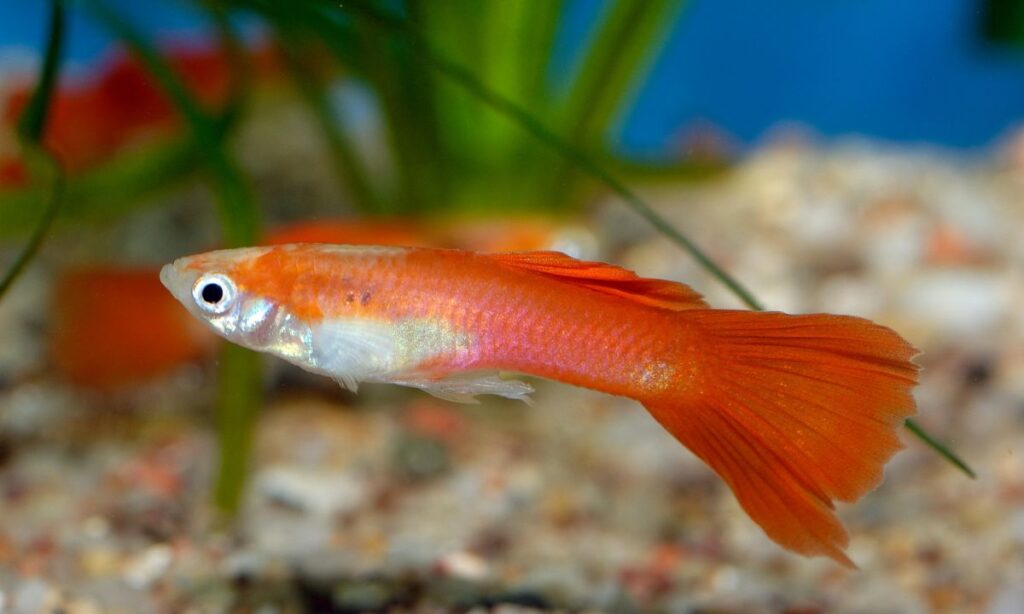
Origin of Guppies
The natural habitat of the guppies is in the north-eastern and southern parts of the American continent.
It is indigenous to a number of different islands, such as Barbados, Trinidad and Tobago, and the Virgin Islands, in addition to Brazil and Venezuela. They have a remarkable capacity for adaptation, and as a result, they have been introduced to several places all over the world, where they typically have a negative impact on the native fish populations.
Identifying A Guppy
Guppies come in a variety of sizes, with males typically measuring between 1.5 and 3.5 centimetres in length on average. The length of a female guppie can range anywhere from three to six centimetres.
As a result of selective breeding, males might have vividly coloured spots or stripes in addition to other markings, whilst females are typically grey in colour. Males can have any combination of these patterns. Fry are the name given to the live-born offspring of guppies, which immediately become independent after birth.
Lifespan Of Guppies
Guppies reach maturity in 10–20 weeks and can live up to 2 years; during this time, females can have multiple broods of fry. Guppies can be kept as aquarium fish.
The average lifespan of a guppy in a live tank is shorter than the average lifespan of a guppy in the wild; but, depending on the dynamics of the aquarium, guppies can live slightly longer than in the wild.
Guppies are an excellent complement to an aquarium that has been meticulously designed and stocked with an abundance of rocks and plant life.
However, you should watch out for predator fish that may be living in the tank, and you should ensure that the guppies have lots of places where they and their young can hide.
As guppies are notorious for killing their young, you should make sure they have plenty to eat and are not kept in too small of an environment, as these are two of the most prevalent triggers for such behaviour. Guppies are an excellent addition to any tank as long as the owner is aware of how to properly care for them.
Guppy Fish Food In India
In the wild, guppies consume a wide variety of foods, including water bug larvae and algae, among other things. You should nonetheless provide your guppies with a variety of foods when they are kept in a home aquarium.
You may make your guppy’s coloration more vibrant by providing it with a high-quality flake diet that is formulated for tropical fish. But if you don’t care about that particular aspect, then they should be OK with any high-quality flake food.
We strongly suggest that you purchase the highest quality food available for your fish. You should probably steer clear of the pellet-style food because the mouths of guppies are often unable to accommodate its size.
1. Tropical Guppy Flakes Super Colour Enhancer Guppy Fish Food
Guppy is a multi-ingredient flake food that can be fed on a daily basis to viviparous fish like as guppies, gladioli, mollies, platypuses, and platypuses. The Premium range of feeds is comprised of ready-made foods that contain a large number of enticing additives. These additives give fish, among other animals, a fantastic condition, gorgeous colours, and increased resistance to diseases. Goods that are both universal and specialised are included in the Premium range. These products are designed for feeding fish that have specific dietary requirements.
The food has been fortified with natural sea salt, which has been shown to have a beneficial impact on the level of electrolytes and osmotic pressure. Both of these factors are directly related to the process of pregnancy and delivery, as well as the viability of the fry and parents, particularly the viability of females. The consumption of food containing spirulina and fibre, both of which are composed of compounds derived from plants that cannot be digested, encourages healthy operation of the digestive system of the fish.
The good condition, even growth, and overall health of the fish are ensured by the high protein content of the diet, which, in conjunction with the carefully chosen complement of vitamins and trace elements, plays a critical role. the addition of sea salt has a favourable influence on the state of the fish and the course of pregnancy. spirulina and plant products regulate the digestive tract. – essential nutrition for guppies and other viviparous fish. – frequent administration ensures even growth and development.
2. Jeffrey Gene Eleven Micro Pellets Special Guppy Fish Food
- The Tetra, Guppies, Barbs, and Bettas can all benefit from the Three-in-one formula’s high concentration of essential nutrients.
- Fish that has been given Quality Peruvian Fish meal, which has been combined with necessary amino acids, is not only healthier but also provides an easily digested source of protein.
- The fish are less stressed and have improved immunity thanks to the addition of dietary fibre and vitamin C.
- Pellets that sink more slowly are preferable for column-feeding fish like bettas, barbs, and bettas. Tetra and Guppy are also good candidates.
- The water in the tank will not become contaminated by the food of Premium Quality.
3. Red Fin Micro Bite Guppy Fish Food
- Fish that has been fed Peruvian fish meal that has been combined with vital amino acids makes for healthier fish and provides a protein that is simple to digest.
- Tetras, guppies, barbs, and bettas can all benefit from the comprehensive nutrition provided by the three-in-one mix.
- The fish are less stressed and have improved immunity as a result of the dietary fibre and extra vitamin C.
- The column feeders, including tetra, guppy, betta, and all little fish, are the best candidates for the slow-sinking pellets, since they are more ideal for them.
Guppies are able to consume a broad variety of foods, and if you want to ensure that they remain healthy, it is essential that you provide them with options in addition to the flakes.
Freeze dried foods
Guppies are willing to consume a wide variety of freeze-dried items; therefore, you should give some thought to include brine shrimp, bloodworms, and daphnia in their diet. (These Tetra Bloodworms are an excellent buy considering their low price!)
Your guppy will have more options to choose from thanks to these items, and if you plan on reproducing them, providing them with a diversified diet will prevent them from eating their young. These can also be served as a live food in place of the freeze-dried variety. Although the nutrients in live meals are more bioavailable, there is also a greater chance that they will spread disease in your aquarium.
Vegetation
Even though it’s probably not the first thing that comes to mind, you can actually feed your guppies vegetables. They will consume things like as lettuce, peas, and cucumbers, which will give your fish with a range of nutrients as well as a tasty diet.
It is essential that you do not overfeed your guppies at any point. They have very small stomachs, which means that if you overfeed them, you run the risk of obstructing their intestines, which can cause them discomfort. Your guppy should only be fed a few times a day, and each feeding should only consist of a very minimal amount.
Also, keep an eye on the temperature of the storage tank. When the temperature drops, guppies will consume less because their metabolism will slow down. Make sure you keep an eye on their eating habits and only give them the amount of food that they can finish in one sitting. Letting food float around in the tank will not only cause the fish to overeat, but it will also cause the water to rot and become polluted.
As a result, once the feeding is finished, it is a good idea to clear away any leftover food. Flake food should be given first thing in the morning, followed by a live food, freeze-dried food, or vegetable in the evening. This is an excellent routine.
This will ensure that your guppies continue to enjoy good health and happiness, and it may even increase their longevity.
Conditions in the Tank That Guppies Prefer
There are a lot of things to think about when putting together a comfortable tank for guppies to live in when you are contemplating obtaining them on their own. A tank that holds 35 liters of water is the most typical size. It is a good starting size, as it is not very large.
If you try to keep your fish in a tank that is any smaller than 35 liters, you will have a tough time maintaining its cleanliness because the tank will not be able to cycle water as well. You will want to make sure that your guppies have a lot of places to hide, so be sure to decorate the aquarium with a lot of plants and ornaments so that they have plenty of places to hide.
Be wary of anything with a pointy edge, however, as there is a possibility that the delicate fins on their bodies could be injured by it. In addition to this, you’ll want to check to see that the gravel at the bottom of the tank measures at least 2 inches thick.
This will not only have an attractive appearance but will also aid to filter the water. You run the risk of your guppies dying if the water temperature is either too hot or too cold, so make sure to keep it at a comfortable level at all times. The warmth in the room is just right.
Even though guppies are frequently used as food by other fish, it is possible for other species to coexist peacefully with them in the same aquarium. If you are planning to build a mixed-species aquarium that will include guppies, or if you already have an aquarium and want to add guppies to it, you will need to think about which fish may either eat them or at the very least nibble at their long fins.
Even if they aren’t being targeted for food by predators, your guppies are still being bullied, which is an extremely stressful situation that will undoubtedly have an impact on their health. You might want to think about getting some platys or gouramis in addition to your current fish.
They are timid fish that want to live in solitude, which creates an atmosphere of tranquilly in an aquarium because of their preference. They also give birth to their young.
There is also the possibility of introducing new species into the tank, such as shrimp; in addition to keeping the tank clean for you in the intervals between cleanings, this makes shrimp an excellent addition to the setup.
Or, you may go with a bottom dweller. Since guppies live in the middle and the top of the tank, adding bottom dwellers will not only keep your tank clean like the shrimp do, but they will also keep your guppies out of the way, which will keep the entire tank happy.
Inclusion of rasboras in the tank is a good idea if you want the inhabitants of the tank to keep you on your toes. These fish have a more assertive personality, yet they will get along famously with the guppies you keep.
When planning the layout of the aquarium, it is essential to give careful consideration to both the appearance of the tank as a whole as well as the species of fish that will live inside it. Keeping this in mind, you should be able to design an intriguing tank for your fish that contains a variety of colours and varieties of fish.
When contemplating the possibility of reproducing your guppies, it is especially vital to give some thought to the inhabitants of your aquarium tank.
How To Breed Guppies
If you are considering breeding guppies, there are a few things that you really need to be aware of before you get started. Your first order of business should be determining whether or not your interest in breeding is purely recreational or more serious.
Because there won’t be as much work involved, casual breeding will give you more freedom to take things gently and focus on having fun.
A more professional breeding operation, on the other hand, requires much preparation and money.
First and foremost, you need to think about the habitat in which they will be bred. Will you be a casual breeder who allows nature to take its course in their usual home tank, or will you put up a dedicated breeding tank in order to carefully control the breeding of your fish?
If you are going to put up a breeding tank, you need to make sure that it is pretty large and provides a sufficient amount of space for the breeding process. It need to be comparable to the one at home so as not to stress the fish out and to facilitate simple mating.
You have the ability to pick the guppies that you will breed with great care based on their colour, size, or any other characteristic that you find fascinating or relevant. Additionally, you will need several tanks in which to house breeding pairs, in addition to several smaller tanks in which to house the fry.
When it comes to accessorising the tanks, there are a few things that are absolutely necessary to have. A breeding trap is a crucial tool to have at your disposal. A little trap like this one is hung in the breeding tank to catch any unwanted visitors.
It contains two compartments that are separated by a slotted wall, so that when the female is ready to give birth, the fry can safely swim to the other compartment. This prevents the female from devouring the fry, which is the last thing you want while breeding fish.
Also, make sure that the lighting and temperature are the same in each tank; doing so will result in far less stress and will increase the likelihood of success. In addition to this, you’ll want to ensure that your filtration system is of the highest possible quality.
Even though guppies are not very dirty fish, the fry are quite vulnerable to the pollution in the water; therefore, it is essential to maintain good water conditions if you want the fry to grow up healthily.
Additionally, you need to make sure that there is sufficient air circulation. It is essential to have a strong air pump in order to circulate the water and start the oxygenation process.
You may also add real plants, which will not only assist oxygenate the water but will also offer the fry a source of food and a place to hide.
There are a few procedures that must be taken before the breeding process can be considered successful. The first thing you need to do is select the guppies you want to breed.
You have the option of selecting any adults that have the characteristics (such as colour, shape, or size) that you want to breed.
If you plan on doing any breeding in the main tank, it is important to make sure that the fish are both comfortable and getting enough food. Guppies aren’t timid fish, so you shouldn’t have any issues breeding them in this manner.
You can, however, transfer everything to a breeding tank in order to have a greater degree of control over the situation. You’ll be able to tell when a female has become pregnant because a place immediately above her fin, known as the gravid spot, will become darker. The gravid spot is where the eggs are stored, so keep an eye out for it. The next step is to wait.
The gestation period lasts for around 30 days, during which time you will notice that your guppy is growing somewhat larger and becoming more boxy in the abdominal region.
When you are getting close to the time of delivery, you should relocate your fish into a breeding trap to ensure the safety of the fry until they are delivered.
They will be completely self-sufficient, and you will be able to transfer them straight away to an isolated tank or space of your choosing. After the fry have been hatched, it is important to give them plenty of places to hide and a lot of vegetation to cover themselves with.
Live plants are better. You can move them into the main tank as soon as possible if they have the appropriate protection, or you can hold them in a separate, smaller tank until they have grown a bit bigger.
It won’t be long until your guppies are ready for another round of breeding, so it’s best to relocate the fry as soon as possible so you can make the breeding tank ready for the next generation.
When caring for the fry, you will need to keep a close eye on the circumstances of the tank because the fry are extremely sensitive to any changes in their environment. In order to ensure that the fry have the best possible chance of surviving, you will need to ensure that the conditions are optimal.
The optimal temperature range is between 24 and 26.5 degrees Celsius and remains constant.
Fry are too small to eat regular guppy pellets or flakes, so you can either give them a special fry food designed for their small mouths or you can crush up the regular flakes and pellets to make it more manageable for them. When feeding the fry, it is important to remember that their size is important. Fry are too small to eat regular guppy pellets or flakes.
You should also consider supplementing their diet with brine shrimp or bloodworms so that they have a greater chance of maturing into adults and receiving all of the necessary nutrients. This will offer them the best possible chance of success.
Also, make sure that your tank is healthy. Because the fry are so vulnerable, it is quite unlikely that they would survive any form of disease. If you are serious about breeding, it is probably a good idea to keep the fry in a separate tank until they are older and have established their immune system more effectively. This is especially important if you plan to breed more than one generation of fish.
Finally, keep a close eye on how quickly your fry are developing. You can assess if they are getting the nutrition they require and if they are developing into healthy adult guppies by looking at how much they have grown.
You will know how to adjust their diet if they are too little or growing too quickly, which will guarantee that they remain healthy, develop strong, and become an interesting addition to whatever tank they are placed in.
Once they have reached the age of between 6 and 8 weeks, they should be able to be introduced into the main tank with the rest of the population without any complications.
Around the 20th week, they will be mature enough to start their own breeding programme.




